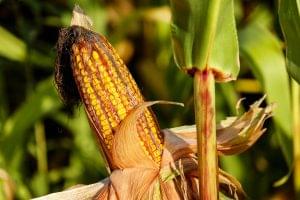The yield of the autumn harvest in Békés County was even weaker than expected
The yield averages for the autumn harvest in Békés County were weaker than the preliminary, not very optimistic expectations, especially the small amount of corn and soybeans, the secretary of the Békés County Agricultural Association told MTI on Tuesday.

(Photo: Pixabay)
Béla Barabás said that an average of 1.2 tons of sunflower was harvested from 86,000 hectares (last year the average was 2.6 tons/hectare); it got better (the average yield was up to 3.5-4 tons) where they irrigated. Corn was grown on almost 93,000 hectares, but 60 percent of the land had to be ensiled. In the remaining area – with a current harvest of 90 percent – the average yield in the county is 1 ton per hectare. The previous year was called tragic with an average yield of 4.5 tons; 2020 was the record year, with a county average of 8.2 tons per hectare. The secretary said that the production cost of one hectare – including drying – ranged between HUF 600-700 thousand; irrigation meant an additional cost of approximately HUF 200,000 per hectare. Only modest or zero farming results could be achieved with the grain farmers; on the other hand, farmers record a loss for autumn-sown crops. The negative balance can be reduced somewhat if a part of last year’s stock can be used, he noted.
Crop loss is expected next year as well
At the last meeting of the Békés County Harvest Coordination Committee, it was said that the placement of basic autumn fertilizers has significantly decreased; small and medium-sized farms practically do not apply fertilizer this year. According to Béla Barabás – although the currently sprouted crops are in a good state of development thanks to the rainy September – the restrained supply of nutrients may cause a loss of crops next year. Speaking about the fodder shortage caused by the bad harvest, the secretary told MTI that the quality of bulk fodder mixed with rye is lower than in previous years; and imports from Transdanubia or abroad are expensive due to transport costs. There is a pig farm in Békés where the livestock has been liquidated and they only undertake wage farming; and he also knows of one where the pig herd was reduced by 30 percent. A more accurate picture of this can be seen at the end of the year – emphasized the secretary.
There have been a lot of mitigation requests
According to the data of the Békés County Directorate of the National Chamber of Agrarian Economy (NAK), winter wheat is 105 thousand instead of the previous year’s 93 thousand; autumn barley 32 thousand instead of 24 thousand; and the farmers plan to grow autumn cabbage-rape on 7,500 hectares; most of the areas have already been sown. Almost 7,300 mitigation applications were submitted this year; which exceeds 205 thousand hectares. For Kukorica, almost 90 percent of the 93,000 hectares of sowing area in Békés county were declared; 36 percent of the boards were declared to have yield reductions of over 90 percent – it was announced at the meeting of the coordination committee.
MTI
Related news
More than 100 Hungarian farmers also demonstrated in Brussels
🎧 Hallgasd a cikket: Lejátszás Szünet Folytatás Leállítás Nyelv: Auto…
Read more >Hungarian champagne crowns the end-of-year holidays!
🎧 Hallgasd a cikket: Lejátszás Szünet Folytatás Leállítás Nyelv: Auto…
Read more >NAK: Domestic producers await customers with an ample supply of all pine species
🎧 Hallgasd a cikket: Lejátszás Szünet Folytatás Leállítás Nyelv: Auto…
Read more >Related news
Christmas shock in commerce: for the first time, we can pay with bank cards in fewer places
🎧 Hallgasd a cikket: Lejátszás Szünet Folytatás Leállítás Nyelv: Auto…
Read more >Hungarian Confectionery Manufacturers Association: trends in 2025 and prospects for 2026
🎧 Hallgasd a cikket: Lejátszás Szünet Folytatás Leállítás Nyelv: Auto…
Read more >Most grocery chains will be open until noon on December 24th
🎧 Hallgasd a cikket: Lejátszás Szünet Folytatás Leállítás Nyelv: Auto…
Read more >






